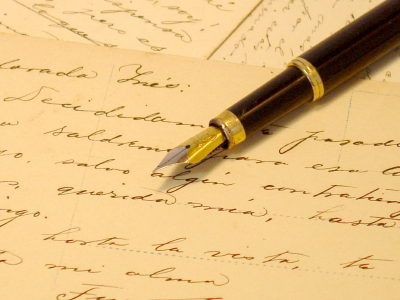How to Write 35% Better and 45% Faster
 I’m not kidding. Yes, your mileage may vary, but I have something that’s real and useful to you: better, faster writing.
I’m not kidding. Yes, your mileage may vary, but I have something that’s real and useful to you: better, faster writing.
It is based on solid, commonsense ideas. And it involves very cool software. Which is also free.
A painless, free way to make real improvement? What’s not to like?
Why We Write Slowly and Poorly
If you’re like me, you suffer from writer’s block, procrastination, and lack of clarity. Occasionally I get lucky. Inspiration hits, the time is right, and the words flow from my pen keyboard like champagne. But not usually.
Usually I miss my deadlines. I start late, I change topics at the last minute. I write in fits and starts. Sometimes I do whole rewrites. Other times I just declare victory and retreat, knowing I could have done better but not wanting to face it.
This is not a new problem. Many people have written about how to solve it; I know, because I’ve read many of their articles, blogposts and eBooks. There is, you’ll be glad to hear, a consensus diagnosis. And I’m about to share it with you, for free.
The problem boils down to two parts:
- We are tormented by distractions, and
- We write like we read—from beginning to end, straight through.
If we could figure out how to reliably focus, and how to write in a structured manner—why, we could actually write well, and on time!
The Two-Part Writing Solution
The two-part problem has a two-part answer: focusing and outlining. Yes, I know it’s simple; what did you expect? It’s also powerful. It’s the answer of those who have studied the problem. It may not be sexy; it’s right.
Focus. The answer to distraction is focus. Focus is mainly about getting rid of external stimuli—email, tweets, texts, noises, visual excitement. This allows you to concentrate your attention.
Great in theory; but how do you do it? Close the door? Go outside? It all seemed unexciting and ineffectual. I never found a great answer—until now.
Outline. Unless you’re writing haiku, don’t try to sit down and write start to finish. Instead, get clear on your opening, your closing, and about three main points in the middle. Get those ideas down on paper. Sharpen them. Tighten them. Be clear about your content.
If you can do that, voila—you’ll actually know what it is you mean to say. And then you can write it. Again, I knew this—but resisted actually doing it. Until now.
The Magic Software Solution to Writing: OmmWriter
I love magic software solutions. Of course, they’re largely mythical. Nine times out of ten they just complicate things, paving over the original winding cowpath. But there is a nifty little software product that actually delivers on Focus and Outlining. I find it really works for me.
It is called OmmWriter, and what is does is simple genius.
- It takes over your computer, putting your email, tweets, alarms, notifications, in a silent state of suspension, as invisible as they are quiet.
- In their stead, your screen is entirely covered in a soft green shade. A very soothing, quiet music plays in the background. (The program recommends you use headphones for maximum effect, and I agree).
- The only thing on the screen is a dirt-simple text editor. No choice of fonts. No fancy formatting controls. No save-as, view-as or send-to options. About all you can do with it is—outline.
And that’s really it. One simple program hijacks most of the threats to your ability to focus, and makes it hard to do anything but outline.
Focus and outline: the two-part solution. Served up with software.
OmmWriter comes in PC, Mac and iPad formats. There is a pure free version, and a shareware version: the minimum recommended (but optional) shareware contribution is $4.11; I’m guessing you can afford it.
And no, I have no connection whatsoever with the Ommwriter folks. This blog will be a surprise to them. They just have good software that deserves publicizing.

 It was five months ago, but I remember it like yesterday.
It was five months ago, but I remember it like yesterday.